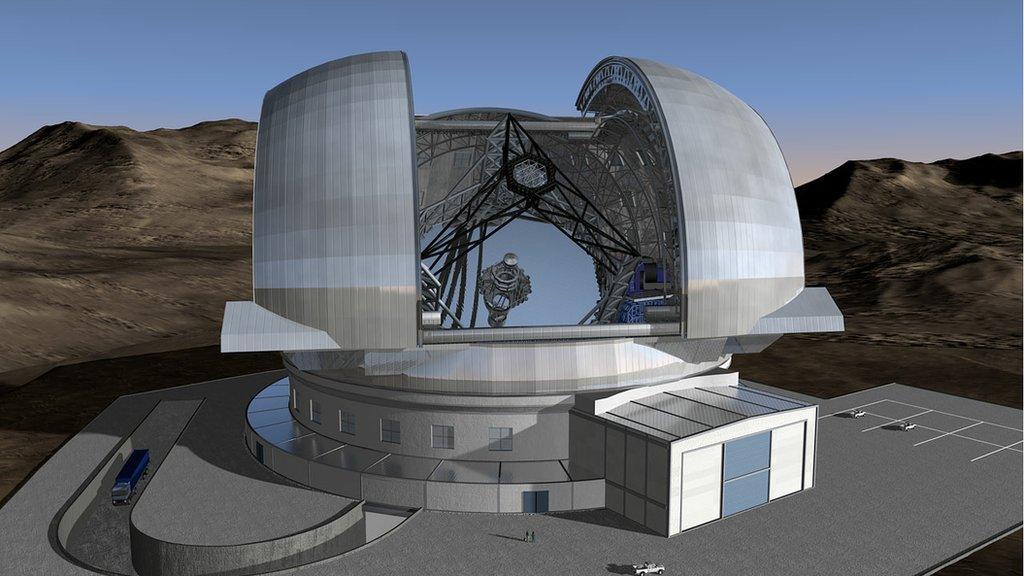E-ELT: Contract to construct giant telescope
- Published

The E-ELT should be able to image directly rocky planets beyond our Solar System
A contract has been signed that will lead to the construction of one of this century's key astronomical facilities.
The European Extremely Large Telescope (E-ELT) will be the biggest optical and infrared observatory ever built, with a primary mirror nearly 40m across.
The Italian-led ACe Consortium will manufacture, transport, and assemble the E-ELT's major structural elements - its support frame and protective dome.
It should enable the Chile-based telescope to see "first light" in 2024.
At €400m (£305m; $445m), the contract is the largest ever awarded by the European Southern Observatory - an intergovernmental organisation that runs some of the world's largest and most advanced telescopes.
It has already had the top of the Armazones mountain in Chile's Atacama Desert levelled to receive the observatory.
Development on the mirrors - in particular, a very complex quaternary mirror - continues apace.
And commissioning steps have been made on the three initial instruments and adaptive optics system (the technology used to overcome atmospheric disturbance when looking at stars).
The support structure and dome were seen as significant outstanding items.
The signatures put to their construction contract in Garching bei München, Germany, on Wednesday mean the E-ELT project can now move to full implementation.
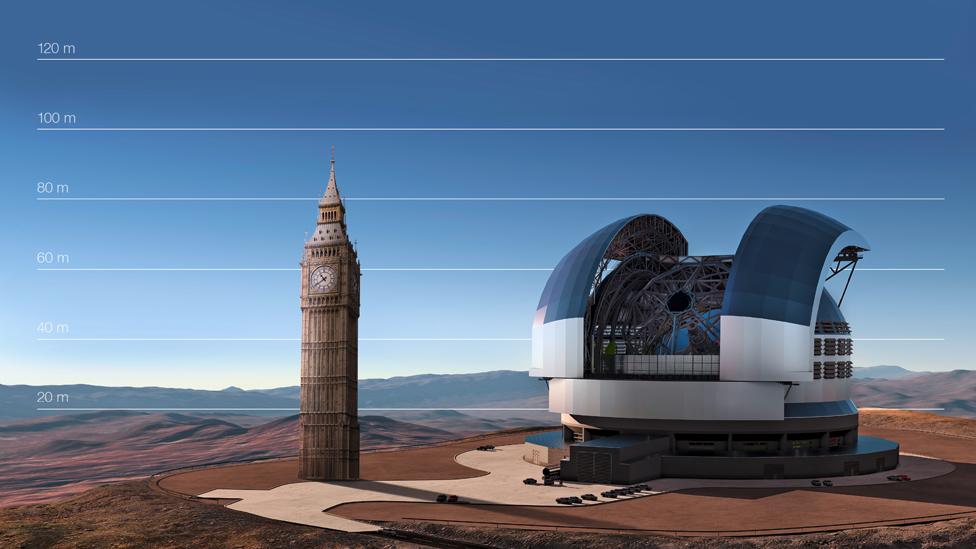
There are some small design issues that still need to be closed out, but this should happen very soon, said Tim de Zeeuw, ESO's director general.
"Essentially, it is fixed now; a design came with the winning bid," he told BBC News.
"There will be one further phase - a 'final design review', which will give us what you might call the blueprints. It is a small iteration. This will be in 8-9 months, and after that we can start pouring concrete."
The E-ELT's 39.3m main mirror will be more than four times the width of today's best optical telescopes (antennas for radio telescopes are still very much bigger).
Its sensitivity and resolution should make it possible to image directly rocky planets beyond our Solar System.
The observatory should also be able to provide major insights into the nature of black holes, galaxy formation, the mysterious "dark matter" that pervades the Universe, and the even more mysterious "dark energy" which appears to be pushing the cosmos apart at an accelerating rate.
The ACe Consortium comprises the Italian construction groups Astaldi and Cimolai, and the nominated sub-contractor EIE Group.
Nicolò D'Amico, the president of Italy's National Institute for Astrophysics (INAF), was present at the Garching signing.
He commented: "This is an important day for Italian industry and Italian science.
"We do a lot of technological development inside our institute with a view to transferring it to industry, so in a sense what we are doing here today is closing the loop."
How the European Extremely Large Telescope (E-ELT) will work
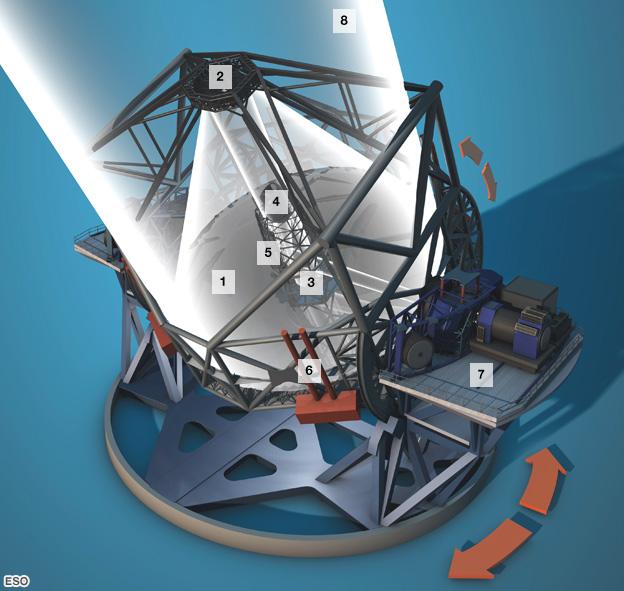
39.3m-wide primary mirror (M1) is made up of almost 800 segments
M2 is 4.2m wide and hangs upside down. It will weigh less than 12t
3.8m-wide M3 sits in a hole in M1. M3 moves with M2 and M4 to focus
2.4m-wide M4 can deform its shape to remove twinkling in stars
M5 is 2.6m x 2.1m. It stabilises the light on to the instrument detectors
Lasers make artificial stars on the sky to help correct the imaging
E-ELT will have two instrument decks; each deck to hold three units
The telescope will be sensitive to visible and near-infrared light
Jonathan.Amos-INTERNET@bbc.co.uk, external and follow me on Twitter: @BBCAmos, external
- Published23 September 2015
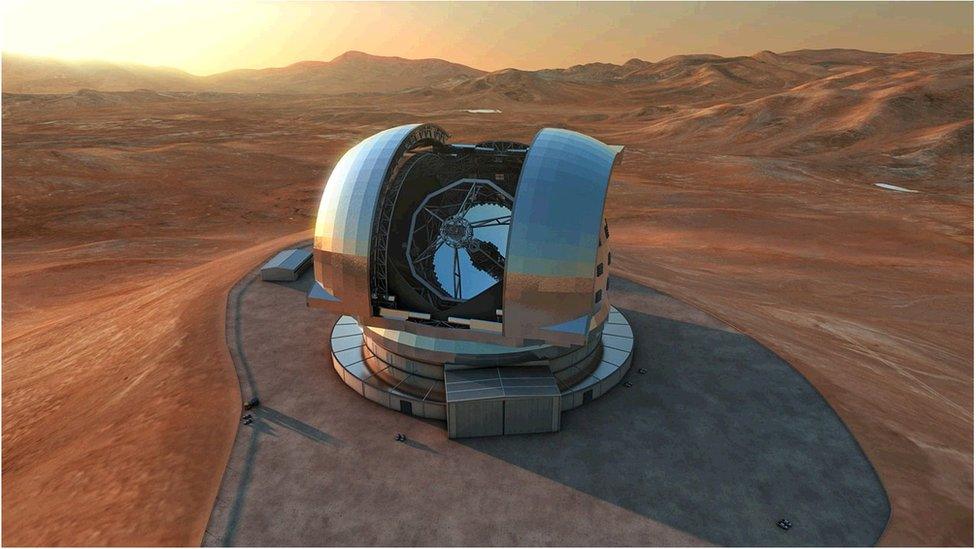
- Published3 June 2015
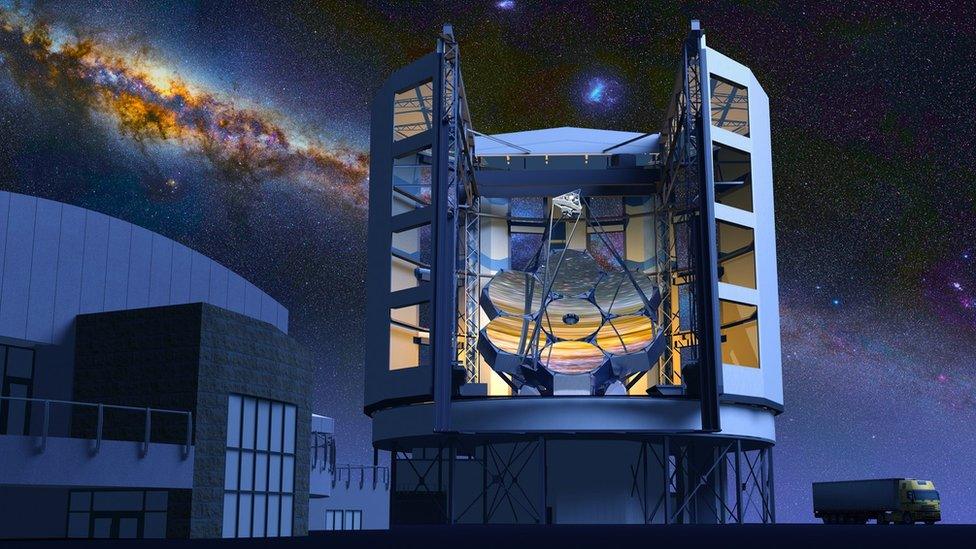
- Published19 June 2014
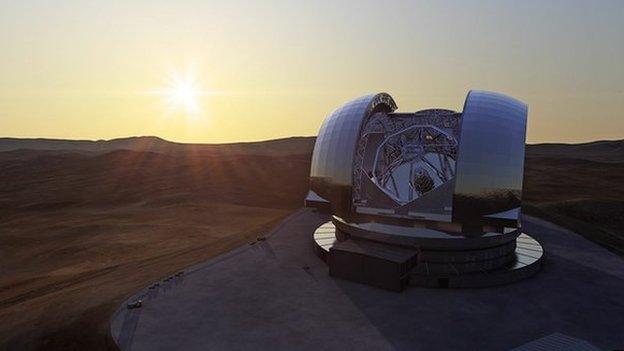
- Published11 June 2012
